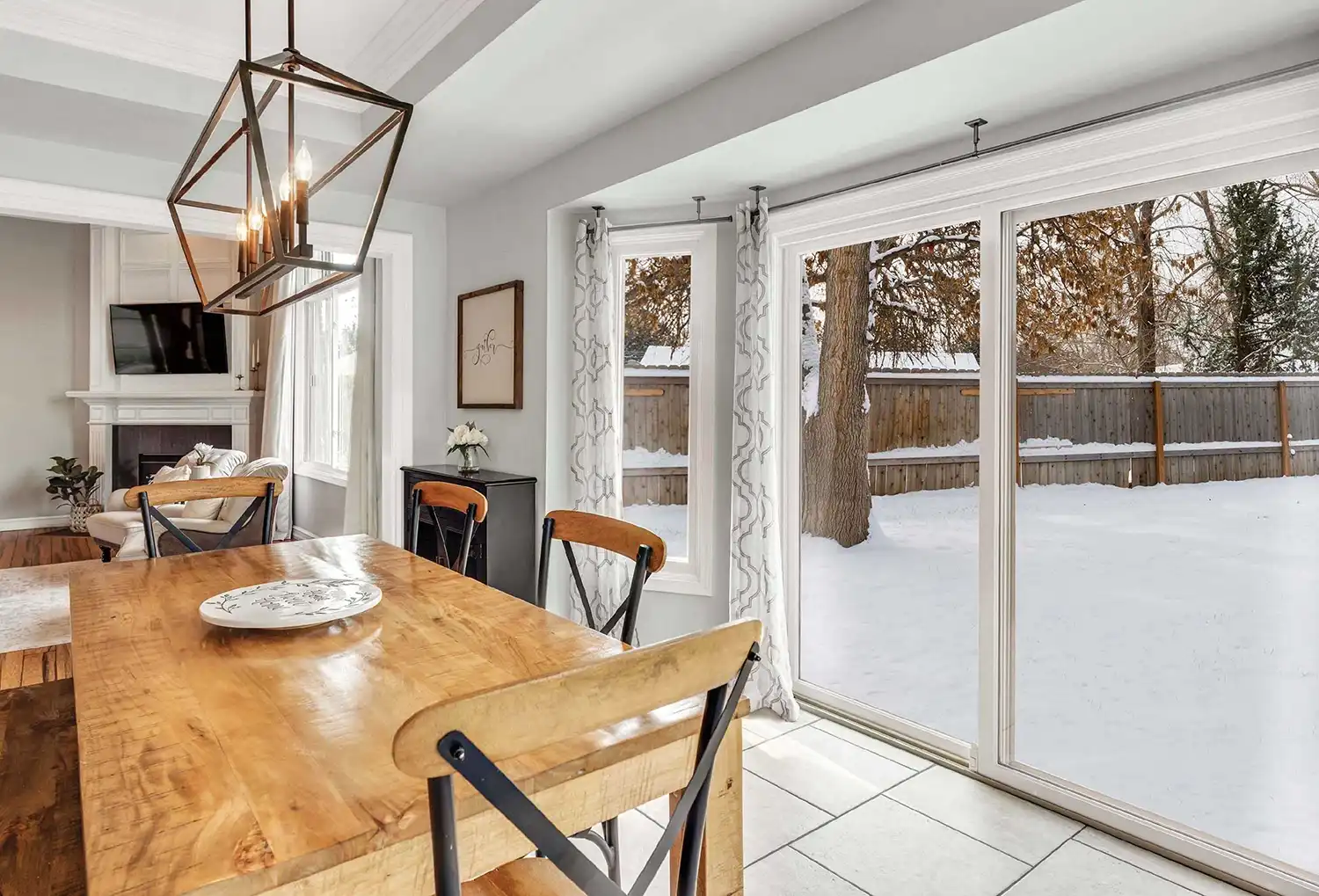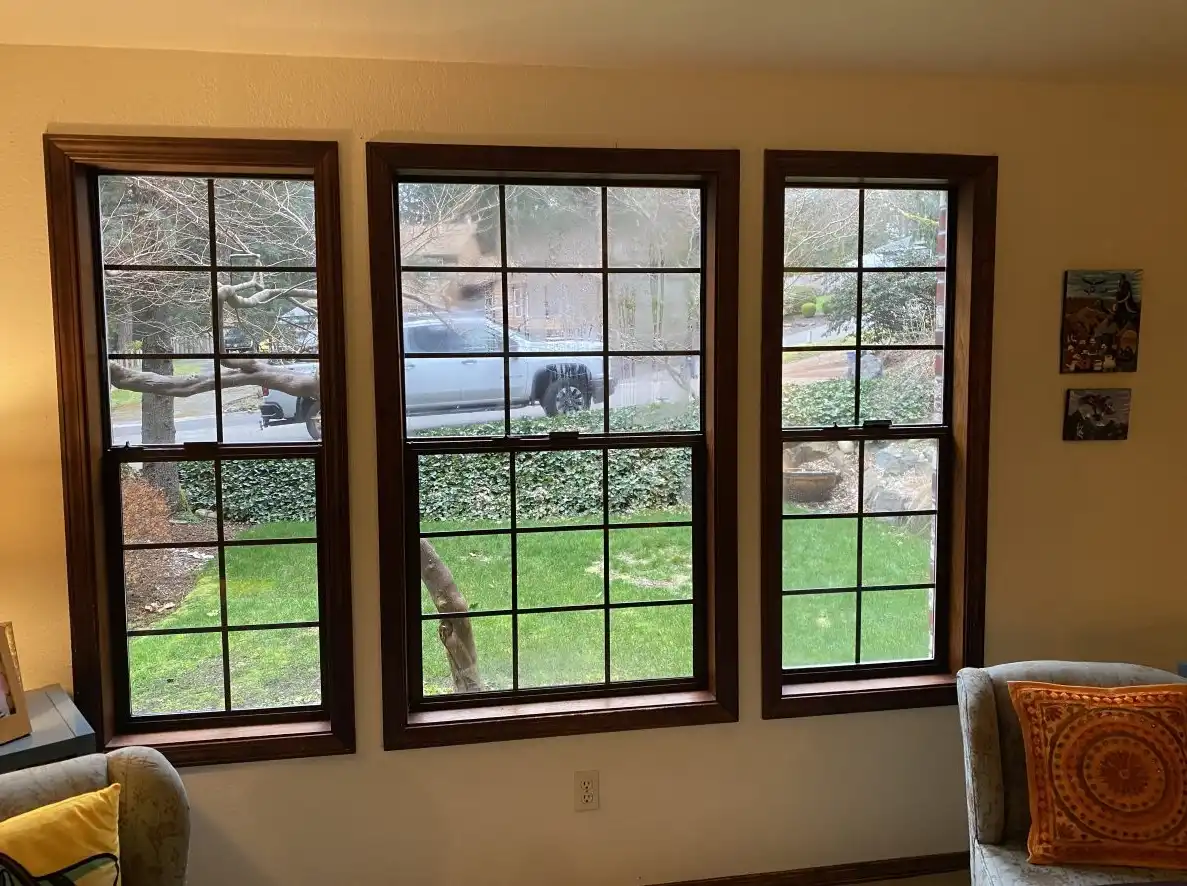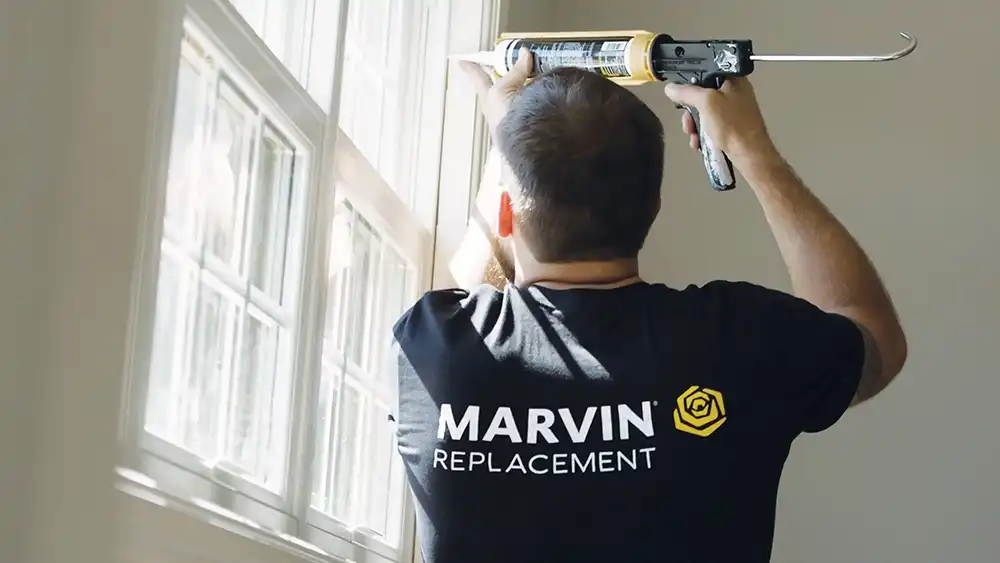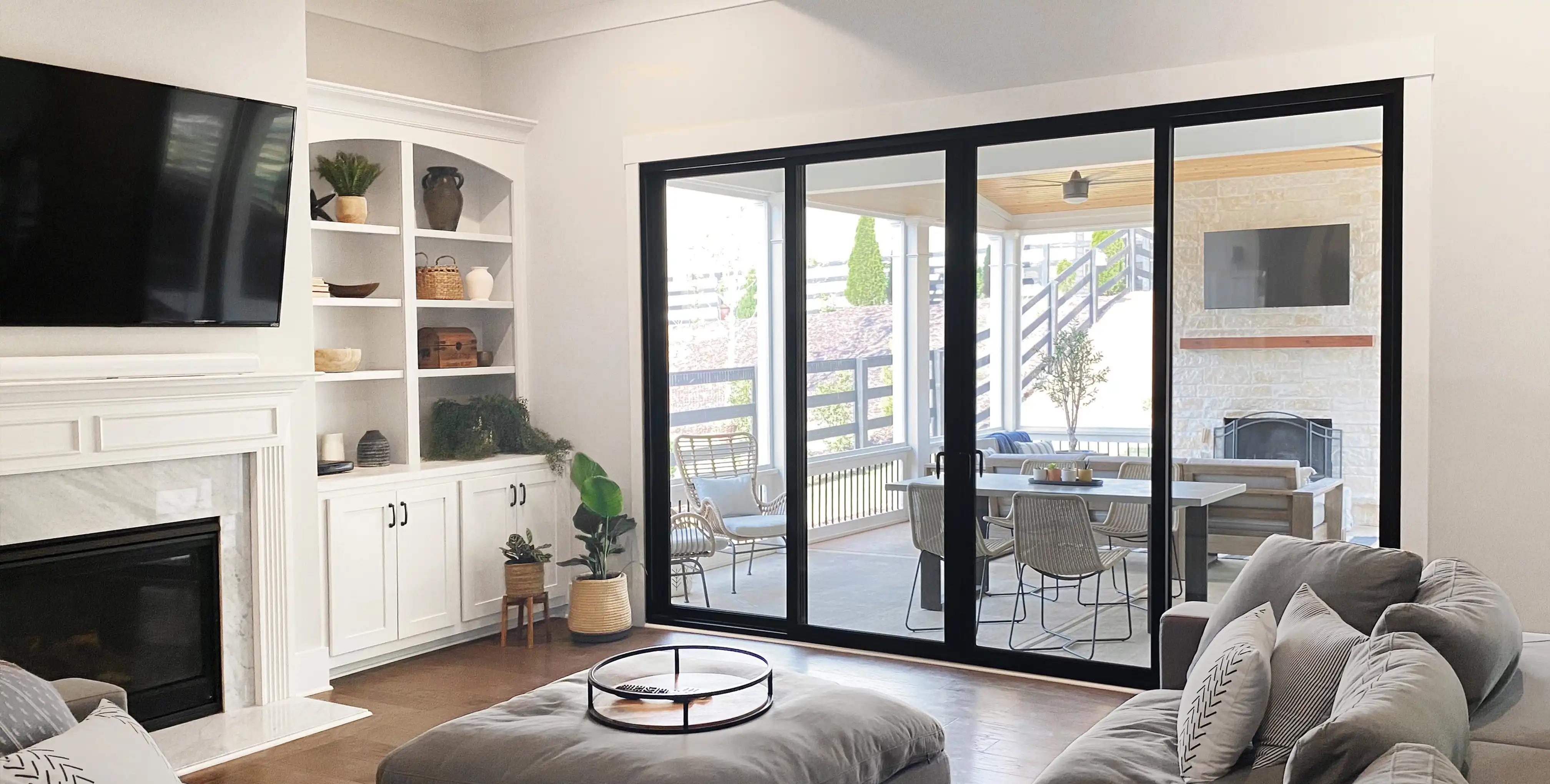
18 November 2024
How to Winterize Your Windows and Patio Doors
When cold weather approaches you can prep your windows and patio doors. You’ll feel comfortable inside during winter when you winterize windows and patio doors. Here’s what to know about prepping your windows and patio doors ahead of winter.
How to Winterize Windows + Patio Doors
Winterizing your windows and patio doors has benefits, like making your home more energy efficient. Winterizing windows and sliding glass doors doesn’t take a lot of work and can help keep your home warmer. Check out these tips to winterize windows and patio doors.
Tips for Winterizing Windows and Patio Doors
Routine window and patio door care and maintenance can help prevent issues and keep them closing tight. Window winterizing can help keep your home warmer, possibly save you money on your energy bills, and improve your home’s energy efficiency. It’s an easy way to feel a little cozier in colder weather.
1. Clean Windows + Patio Doors
Before winter arrives, take the time to clean your windows. Cleaning your windows will reveal any issues that could lead to leaky windows. Jot down any issues you see as you clean windows to address them later. Do the same with your patio doors. Remove your exterior screens while cleaning. You can clean your screens, too. Store them in a safe, cool, and dry place for the winter. If left out during winter, snow can cling to screens. The weight of the snow can cause them to sag.
2. Check for Drafts and Gaps
You can use a flashlight to see if light appears on the other side of your windows or patio doors. If you notice light on the other side, you could have drafty windows or gaps where air can enter your home. You can seal any gaps with caulk, weatherstripping, or foam. Be sure to keep your windows and patio doors locked to ensure a tight seal.
3. Add Weatherstripping
Weatherstripping can reduce air infiltration through your windows and patio doors. Where do you put weatherstripping? Weatherstripping gets placed where sash meet, at window edges, as well as the top and bottom of windows. Most have adhesive backing that makes it easy to install. Self-adhesive strips work well for casement windows to help create a tighter seal.
4. Caulk Around Windows
As caulk ages it begins to lose its ability to keep cold air out. Caulk seals gaps around your window and door frame so they’re weather-tight. Caulk needs routine inspection and replacing when it starts to deteriorate. Caulking windows doesn’t require a lot of work, just caulk, a caulk gun, a utility knife to cut the nozzle, and something to puncture a hole in the nozzle to allow a bead of caulk to flow.
5. Add Insulation to Doors and Windows
Adding insulation behind window and door trim can help reduce air leaks ahead of winter. You can use spray foam insulation or batt insulation. Spray foam is easy to use but find a spray foam insulation designed for use with windows and patio doors. If you choose batt insulation, don’t overstuff the area. Batt insulation doesn’t work as well when compacted.
Benefits of Winterizing Your Windows and Patio Doors
There are several benefits of winterizing your windows and patio doors. As temperatures drop, the impact of unwanted cool air entering your home increases. Persistent cool air can mean that your furnace must work longer and more often. That can impact your heating costs. Winterizing windows and patio doors can help with that. You can also improve the performance of your windows and patio doors by winterizing them.
Improved Energy Efficiency
Winterizing your windows and patio doors can help create an airtight seal to improve your home’s energy efficiency. Adding insulation around your windows and patio doors also helps with energy efficiency to protect against heat transfer from inside and outside your home. Improved energy efficiency can possibly help reducing your heating and cooling costs.
Cost Savings
Winterizing your windows and patio doors has the potential to save costs on your energy bill. When you seal up your windows and patio doors, you reduce the possibility of cold air entering your home. The less cool air entering your home means your furnace doesn’t need to run as often.
Extended Longevity
When you winterize your windows and patio doors you help seal out cold air. Left unchecked, cold air can lead to condensation and moisture with your windows. Moisture issues can lead to mold and wood rot, which can reduce the lifespan of your windows and doors.
How to Winterize and Insulate Windows
Some of the best ways to winterize windows are the easiest. People in cold weather areas use shrink wrap kits, thermal curtains, and shades to prevent energy loss with windows.
Window Winterization Kit
A winter weatherization kit can prevent cold air from coming into a home. The kits come with double-sided tape and shrink wrap. The plastic wrap gets adhered to a window or patio door frame with double-sided tape to create a seal around a window. Waving a blow dryer over the wrap tightens the shrink wrap for a tight seal. It’s an easy way to insulate your windows in winter.
Thermal Curtains
Thermal curtains can provide more insulation for homes. They can have a foam core and vapor barrier. Thermal curtains block heat transfer. When closed they can have an R-value between R-3 to R-5, which is close to the same value as an inch of fiberglass batt insulation. R-value measures the capacity of a material to resist heat flow. The higher the R-value, the greater the insulating capability.
You can also open your curtains during the day in areas that receive a lot of sunlight. The natural light can help warm the area. You can also close the blinds and curtains at night as a barrier for cold air.
Cellular Shades
Cellular shades can help insulate as a window covering. They have air pockets that can reduce the transfer of heat through a window. You can find cellular shades custom built for your windows and in many styles.
Replace Old Windows + Patio Doors
You might need to replace your windows with newer, energy efficient ones. If you see condensation between window panes, it can mean the seal inside the window panes has failed. A broken seal can decrease the energy efficiency of your windows and patio doors. If you’ve tried everything and still have issues with your windows, Marvin Replacement can help you find new windows and patio doors for your home.
How to Winterize and Insulate Patio Doors
Patio doors can span wide in a home, leaving them susceptible to air leaks. Winterizing and insulating patio doors can help with your home’s energy efficiency. Doing so doesn’t always require a ton of effort. Here’s what you can do to winterize and insulate patio doors.
1. Use a Draft Stopper
A draft stopper placed under door can help stop cold air from entering a room. A draft stopper can block the path of cold air from entering. They can come with different types of filling, and they work like a fabric weatherstripping. They can stop warm air from escaping inside your home, too.
2. Insulation Kit
A patio door insulation kit, or a shrink wrap kit, can help seal air leaks that can stem from a patio door. The kits can come in patio door sizes and you can install them quickly. They help create a barrier for cold air and can help increase insulating value, also known as R-value.
3. Replace Weatherstripping
Weatherstripping helps create a seal to stop air from passing through. It seals the edges of doors when they’re closed. But it wears out over time and lose its effectiveness. If your weatherstripping looks worn, it’s a good idea to replace it to help with energy efficiency.
4. Replace Caulk
Caulk helps seal gaps around door jambs and sills. It can deteriorate over time and lose its effectiveness. Routine inspection of the sealant around your patio door can help you detect issues and fix them ahead of cooler weather.
5. Buy a New Door
Depending on the age of your patio door and its condition, it might be time to replace it. Newer patio doors come energy efficient and have glass options that can suit your climate the best. A new patio door can allow you to upgrade the material to a more efficient one, like our Ultrex fiberglass. You can also address any insulation issues at installation time.
FAQs
What is the best way to winterize windows?
The best way to winterize windows is often to address any weatherstripping and caulking issues with your windows. They help seal out cool air that can affect the comfortability of your home. You can also use shrink wrap kits and thermal curtains to help winterize windows.
How can I insulate my patio doors for winter?
You can insulate patio doors for winter by sealing gaps around the door frame with sealant. You can also replace weatherstripping to help seal air leaks. Adding insulation, using a patio door insulation kit, and thermal curtains can also help with patio doors.
Should I replace my windows before winter?
Replacing your windows before winter can help you realize any potential energy savings sooner. But replacing your windows at any time of the year can also help with that. Windows come designed for energy efficiency and special glass coatings can help reflect solar heat away from your home’s interior during warmer months to help with energy costs.
What are easy ways to insulate windows and patio doors in cold weather?
A window insulation kit is among the easiest ways to insulate windows and patio doors in cold weather. They seal windows and patio doors quick, and you don’t need many tools to install them. Window insulation kits are inexpensive option. A window insulation kit can cost between $10 and $30, depending on what you select.
Back to All Articles
You May Also Like

What to Do When Foggy Windows Appear
Foggy windows affecting your view outside? Find out why you have foggy windows and what you can do to solve the problem.
Foggy Window Causes
What is a Home Energy Audit?
A home energy audit can give you a picture of improvements you can make to your home to decrease energy use and can improve energy efficiency beyond replacing your windows and doors.
Do you need a home energy audit?
When to Replace Patio Doors
Deciding whether to repair a patio door or replace it typically comes down to the extent of the damage. But if the patio door has more extensive damage, like broken glass or warping, replacement is the better way to go.
When to Replace Patio Doors